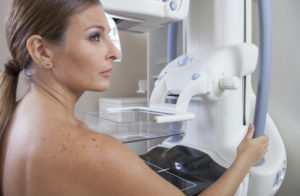Mammograms: The Importance of Symptoms
 When it comes to your mammogram, you play a key role in making sure you get the right test at the right time. When it comes to talking about symptoms – we need you to tell us. A diagnostic mammogram means we are going to try to find out the cause of your symptoms in addition to looking for signs of breast cancer – meaning we may need extra steps. A screening mammogram is done to look for cancer in a woman who is without any breast symptoms. It’s important that we know what is going on with you, so we can get you and your referring doctor the answers you need.
When it comes to your mammogram, you play a key role in making sure you get the right test at the right time. When it comes to talking about symptoms – we need you to tell us. A diagnostic mammogram means we are going to try to find out the cause of your symptoms in addition to looking for signs of breast cancer – meaning we may need extra steps. A screening mammogram is done to look for cancer in a woman who is without any breast symptoms. It’s important that we know what is going on with you, so we can get you and your referring doctor the answers you need.
Info-mania
Your radiologist and technologist will ask a lot of questions. There will be forms to fill out when you come in for your mammogram ask about family history, any surgical history with respect to your breasts, and any symptoms you might be experincing. These would include things like feeling a lump, an area that feels thickened, new breast pain or tenderness and breast discharge (leakage from a nipple). Any of these changes in your breast would prompt the need for a closer, tailored look and a diagnostic test. It’s important for you to offer up any information that comes to mind, whether the question has been directly asked or not. Honest communication will help us help you.
A Closer Look
The diagnostic mammogram will include the standard mammographic views to start. Based on your symptom, we may need to do additional things, which is why a radiologist must be available to look at your images while you are there for a diagnostic test (not always the case with a screening mammogram). We will often mark the area of symptoms with a marker we can see on the image (a BB or circle) if it is something focal, like a lump or a focal area of pain. Additional mammographic views may be needed, and breast ultrasound is a common next step in evaluating women who present with a lump. These types of imaging aren’t necessary for everyone, every time, but be sure that when a you come in with a concern we will do all we can to find you an answer.
The Right Order
If you develop a symptom related to the breast, we recommend first contacting your primary medical provider who will likely do a breast exam and send you for appropriate imaging. You will need an order for the diagnostic breast study from your referring doctor. Taking action is the thing to do, but be aware that there’s a process that might require some extra steps.
So, with any breast symptom it’s important to speak up, and be proactive. Because you are your own first line of defense, it is up to you to arm your doctors with everything they need to help ensure your best possible health.
Originally published 8/7/13 on mammographykc.com.





